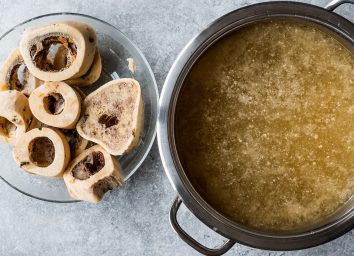Over 50? Eat These Foods For Stronger Bones, Say Dietitians
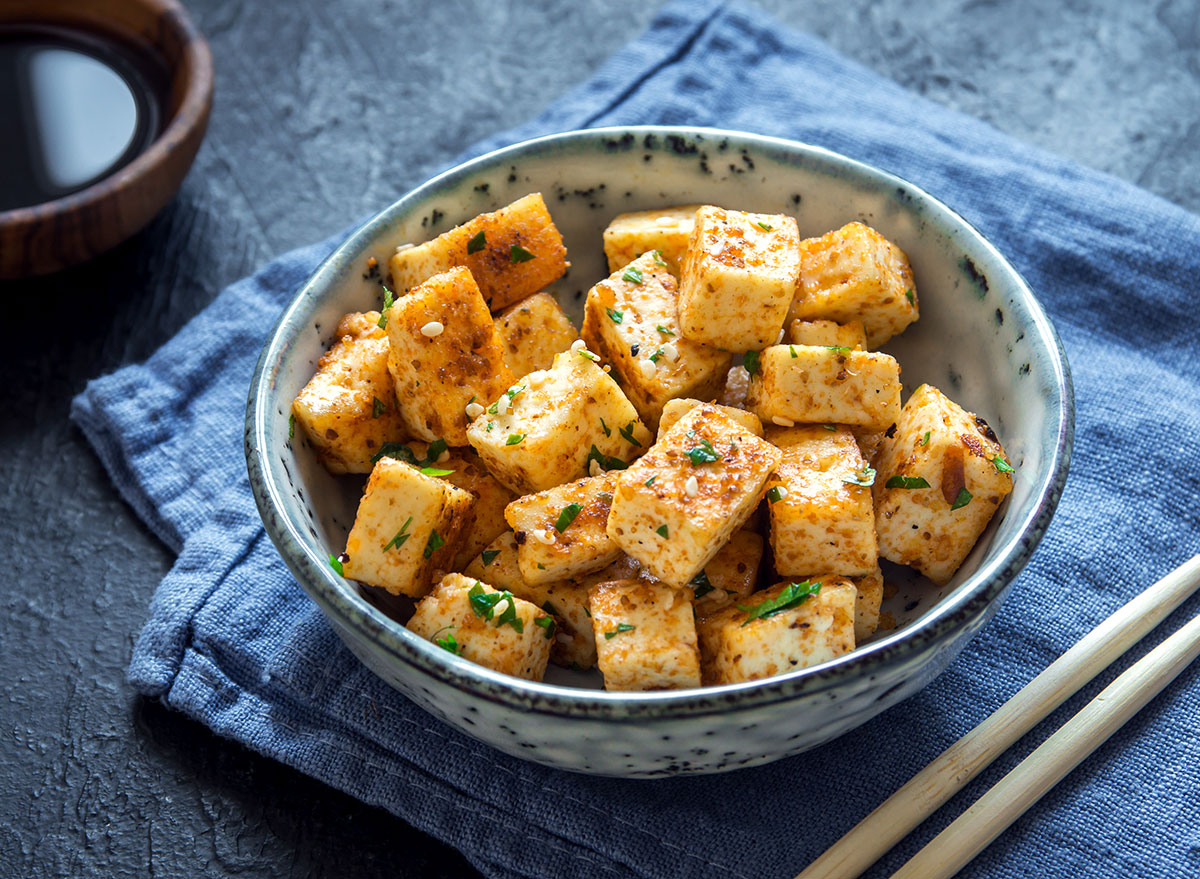
As you age, it’s important to consider all of the significant changes that are happening in your body—and tweak your diet accordingly. One of those changes has to do with your bones: people start to naturally lose bone mass and density faster than new tissue can form as they get older, meaning bones may become more brittle and prone to breaking.
This is especially true for postmenopausal women. According to Elizabeth Ward, MS, RDN, and co-author of The Menopause Diet Plan, A Natural Guide to Hormones, Health, and Happiness, women lose bone tissue at a faster pace during the first five years after menopause because of waning levels of estrogen, which helps protect them against bone disease.
The fact is, your bones also start losing calcium and other essential minerals with age. Fortunately, a well-balanced diet can help: by eating foods that are rich in bone-strengthening vitamins and minerals, you can reduce your risk of losing bone mass, and all the risks that come with that.
“Poor bone health can lead to issues like rickets and osteoporosis, as well as an increased chance of fracturing a bone later in life from a fall,” says Sally Stevens, RDN and co-founder of FastPeopleSearch.io. “To protect and to maintain your bones, you need to add foods rich in calcium, vitamin D to assist your body in absorbing calcium, vitamin C for collagen synthesis, and phosphorus to your diet.”
Contrary to popular belief, dairy isn’t your only option: you can still improve your bone health through your diet even if you’re vegan or lactose-intolerant.
“Everyone knows about yogurt, milk, and cheese being rich in calcium and good for bone health—however, there are many other foods that can help,” says Amy Archer, RDN.
Not sure what you should be eating? Below, experts share their top recommendations for bone-strengthening foods. Then, be sure to check out our list of The 7 Healthiest Foods to Eat Right Now.
Salmon
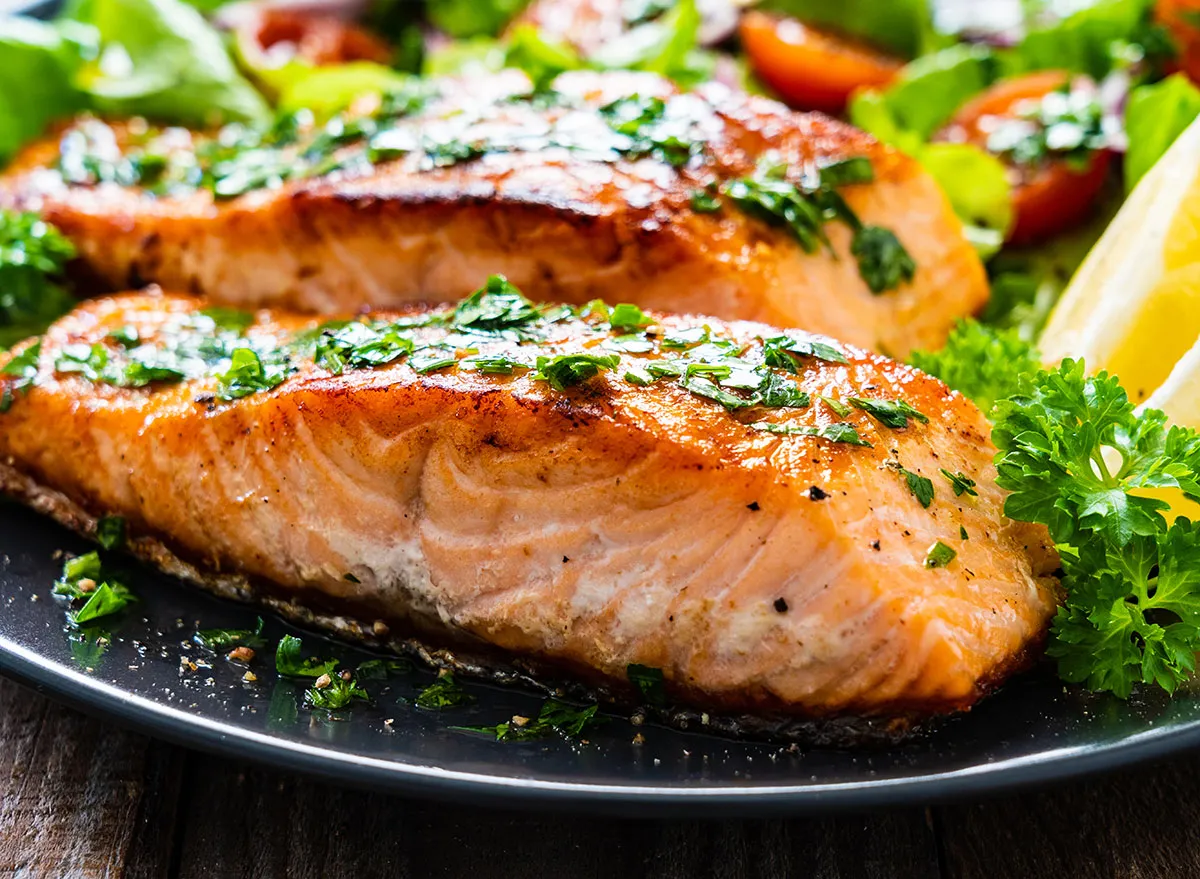
Look no further for a healthy lunch or dinner entree—this fish is packed with not one, but several nutrients that can boost bone health.
“Salmon is rich in protein, which is key to producing bone tissue,” says Ward. “It also provides vitamin D, which the body needs to absorb calcium from food and deposit it in bone tissue to help protect bones from fracture. In addition, salmon is rich in DHA and EPA, which are associated with improved bone strength.”
Another reason why salmon is an excellent choice, according to Tayler Silfverduk, RDN, is that vitamin D is a fat-soluble nutrient, so the fat this fish contains it helps your body to better absorb the vitamin.
“A 4-ounce serving of salmon has 500 international units (IU) of vitamin D, with the Recommended Dietary Allowance (RDA) being 600 IU,” says Kathy Siegel, MS, RDN, nutrition consultant at Kathy Siegel Nutrition and author of The 30-Minute Clean Eating Cookbook and Eating Clean Vegetarian Cookbook. “And studies suggest that omega 3 fatty acids may inhibit bone breakdown by increasing calcium absorption.”
Kale
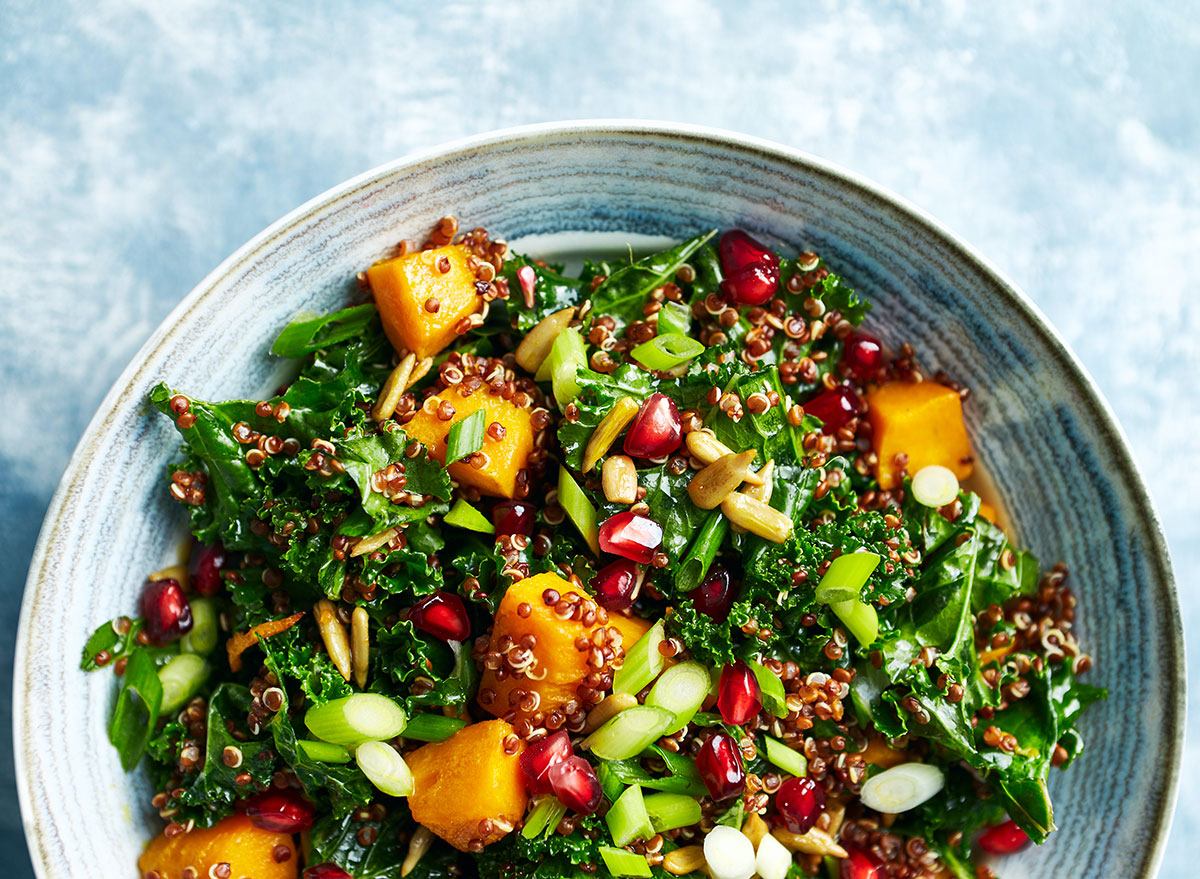
Men over the age of 50 should aim to get 1,000 milligrams of calcium daily, while women over the age of should aim to get 1,200 milligrams, according to Siegel.
“Dark leafy greens such as kale, turnip greens, and arugula are rich in calcium, which is an essential mineral for bone health,” says Isa Kujawski, RDN, a functional nutritionist and health coach and founder of Mea Nutrition. “Just one cup of chopped kale contains roughly 170 milligrams of calcium or around 15% of your daily calcium requirement. Consuming adequate amounts of calcium is imperative for individuals over 50, as bones tend to lose calcium at an accelerated rate as part of the aging process.”
But Ward notes that bone health is about more than just consuming adequate calcium and vitamin D.
“Dark leafy greens like kale contain vitamin K, which is necessary to make a vital component of bone tissue,” she explains.
Not only that, Laura M. Ali, RD and culinary nutritionist, points out, dark leafy greens are also stellar sources of potassium. A 2017 study in Osteoporosis International found that a higher dietary potassium intake was linked to higher bone density.
Siegel adds that collard greens and bok choy are also calcium-rich picks. Something to keep in mind, though: while spinach is also a good source of calcium and vitamin K, it also happens to be high in oxalates, compounds that bind to calcium so your body is unable to absorb it.
Beans
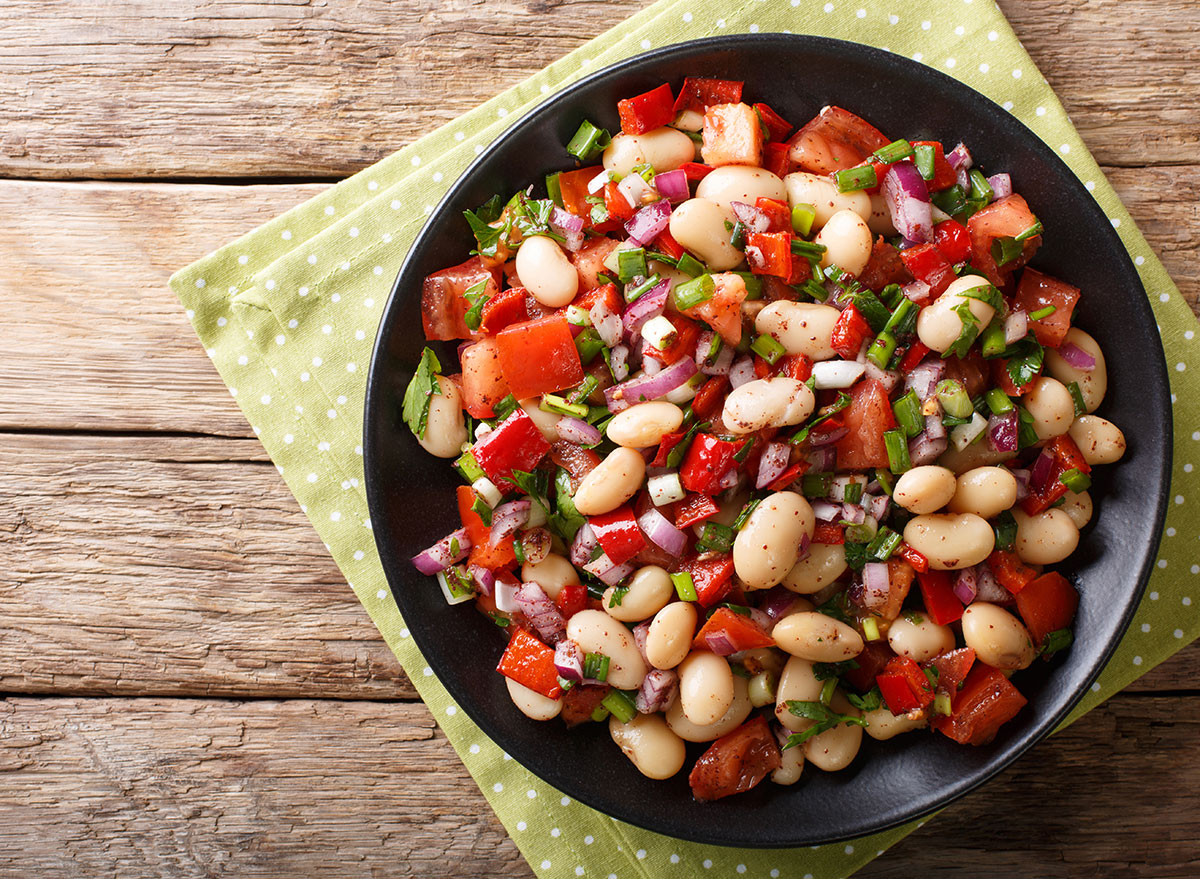
According to Stevens, calcium is the most important mineral for bone health.
“Because old bone cells are constantly broken down it’s crucial to consume calcium daily to protect bone structure and strength,” says Stevens.
Beans are a phenomenal plant-based source of calcium—for example, one cup of white beans offers 191 milligrams of this mineral, which is 14.7% of the daily value (DV).
Black beans are another excellent option, says Ward.
“Black beans contain significant amounts of magnesium, a mineral that is necessary for bone health,” she explains.
Ward adds that beans are also a good source of potassium. That’s noteworthy given that 2013 research conducted at Johns Hopkins found that potassium can improve calcium metabolism.
Bell peppers
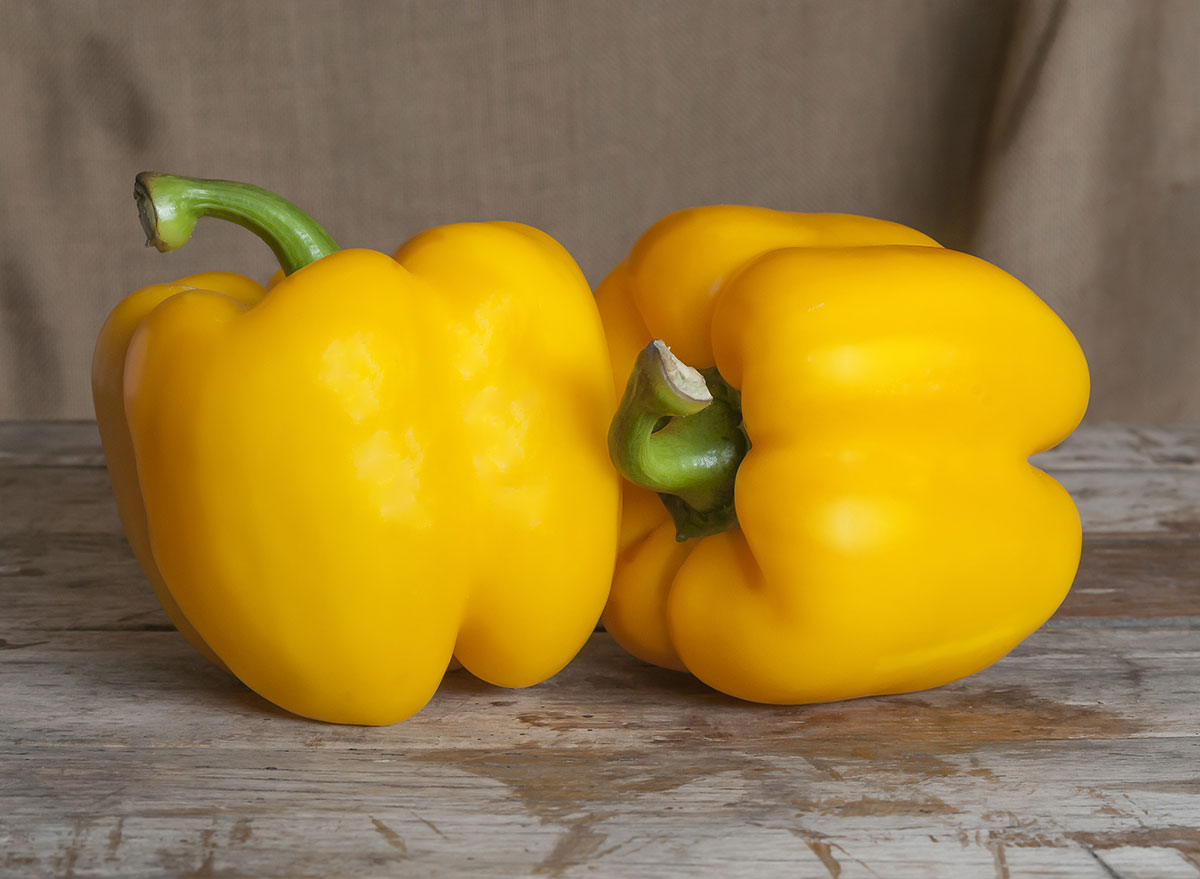
One large yellow bell pepper packs a whopping 342 milligrams of vitamin C—that’s 380% of the DV.
“Vitamin C stimulates the production of bone-forming cells and protects bone cells from damage,” says Stevens. “High intake of green and yellow vegetables increases bone mineralization.”
Tofu
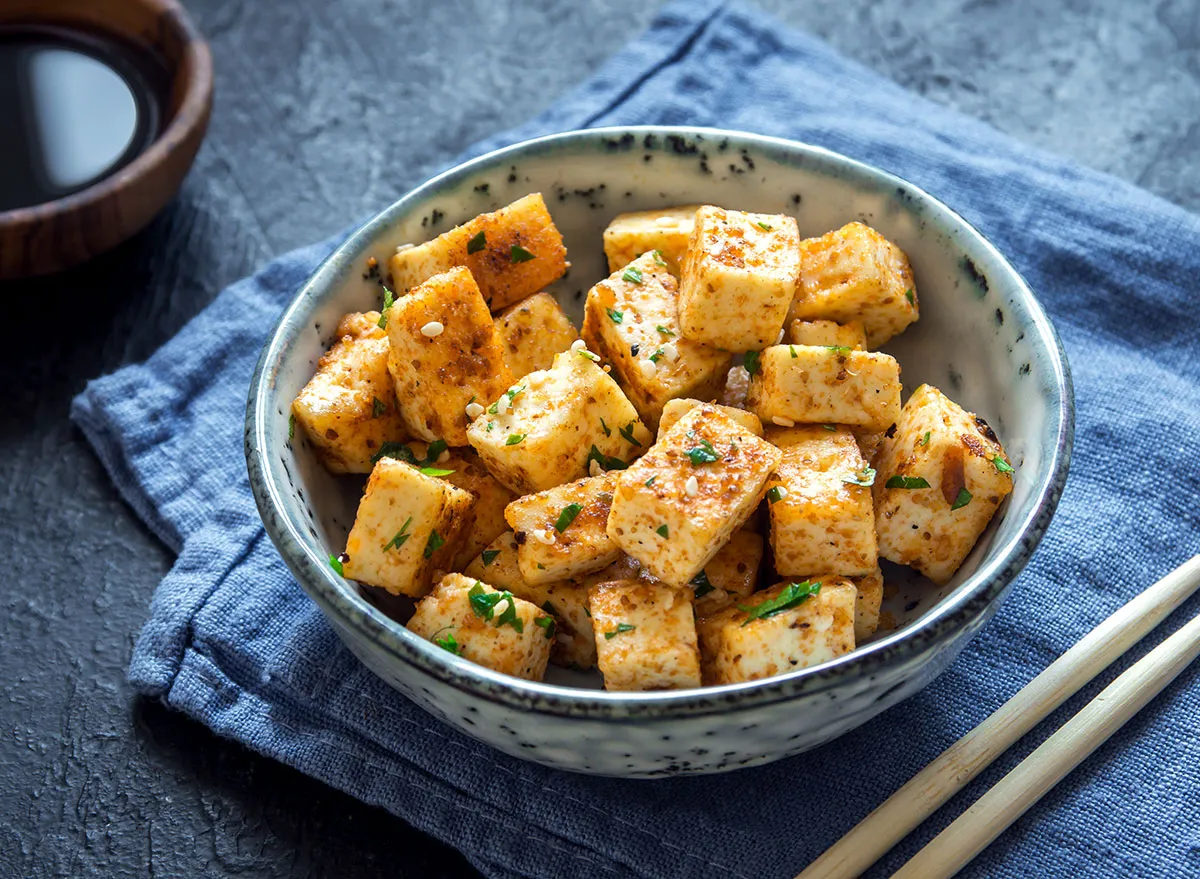
Looking for a vegetarian protein source? Your bones will thank you for adding tofu to your shopping cart.
A 2019 study in JNCI Cancer Spectrum found that higher soy intake was associated with a 77% reduced risk of osteoporotic fractures in women.
“Soy products like tofu, edamame, and soy milk contain phytoestrogens or plant compounds that have a similar structure to estrogen, which we know helps rebuild bones,” says Ali. “Many soy foods are also fortified with calcium and vitamin D so you get an added bang for your buck with fortified soy foods.”
Eggs
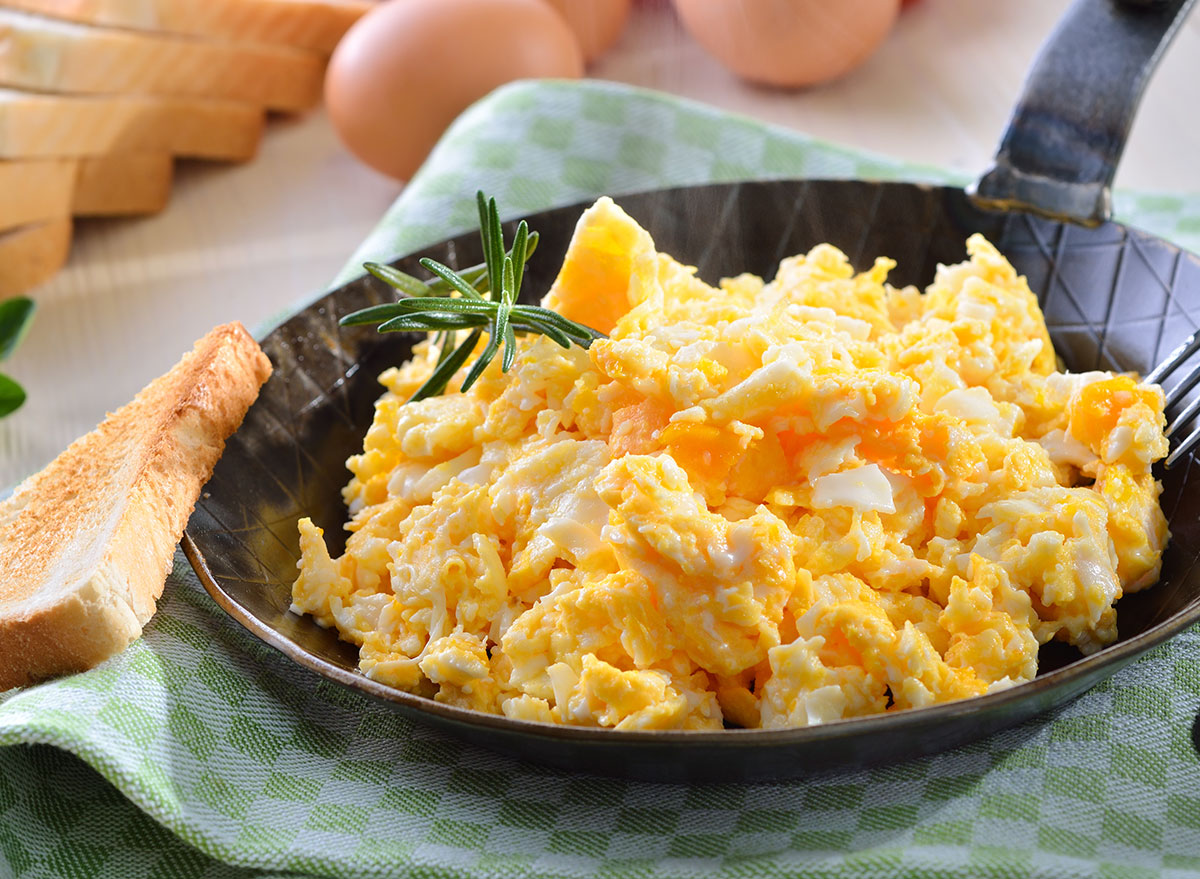
Experts say starting your day with a scramble or an omelet is an easy way to protect your bones.
“Eggs are a rare food that naturally provides vitamin D—which is needed to help absorb calcium from the intestinal tract,” says Holly Klamer, MS, RDN with MyCrohnsAndColitisTeam. “While vitamin D can be absorbed from sunlight, many people spend the majority of daylight hours inside and do not get adequate vitamin D through their diet. This makes eating vitamin D foods a priority for bone health in those over 50.”
Whatever you do, though, don’t skip the yolk: one egg yolk contains nearly 100% daily value of vitamin K2, a fat-soluble vitamin that Kujawski says delivers calcium to bones.
“Vitamin K2 is a common nutrient deficiency among Americans,” she adds. “Aging individuals should make sure that vitamin K2 is part of their daily diet or supplement regimen to ensure calcium is adequately shuttled to their bones.”
Pumpkin seeds
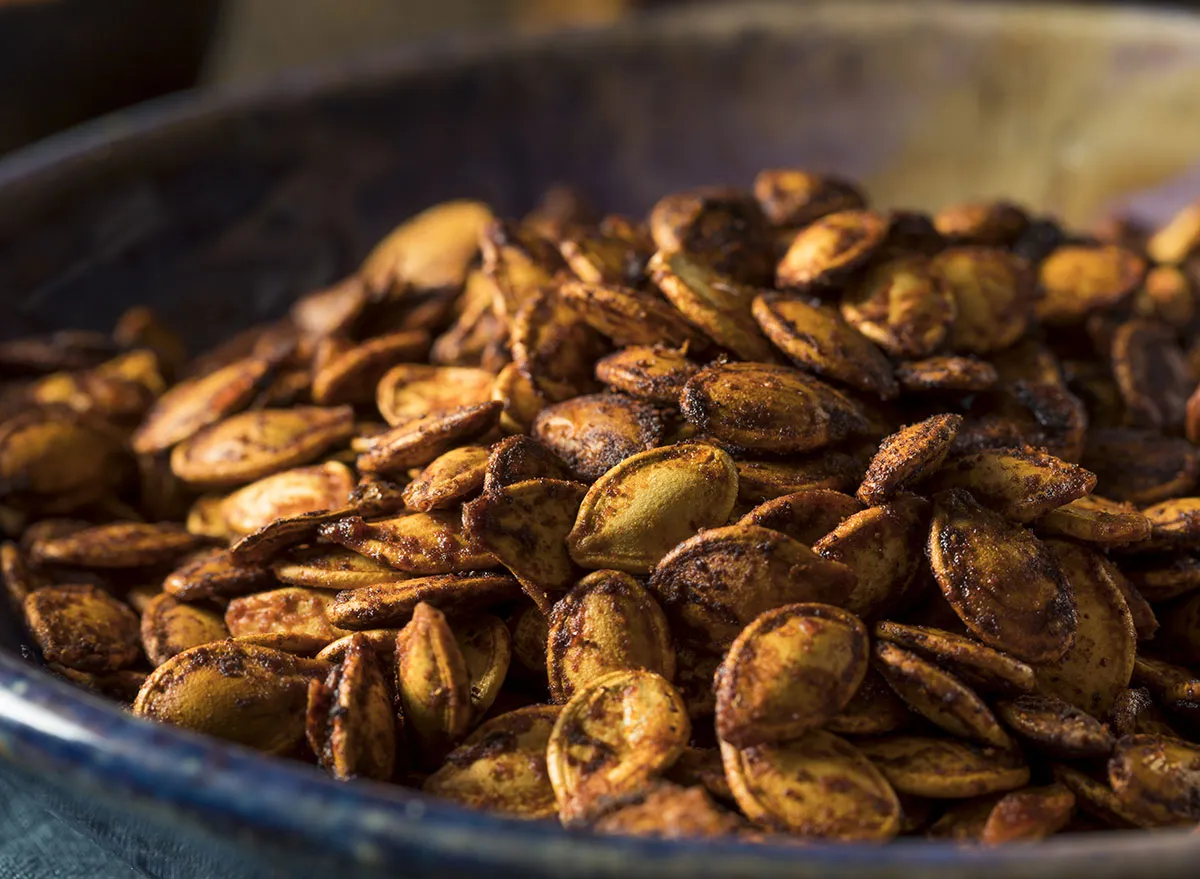
Whether you snack on them solo or toss them into salads and grain bowls, Silfverduk says pumpkin seeds are one superfood that can have a major impact on your bones.
“Pumpkin seeds are rich in magnesium, zinc, and phosphorus—all minerals essential for bone health,” says Siegel. “Magnesium supports the activation of vitamin D, which helps regulate calcium and phosphorous to build and maintain bone mass. Zinc is needed to absorb calcium. Without zinc, you cannot grow and maintain healthy bones. And phosphorous is necessary to support increases in bone mass, working together with calcium and vitamin D for optimal bone health.
Chia seeds are another spectacular choice, according to Klamer, thanks to their high concentration of calcium and magnesium.
For even more aging tips, read these next:

